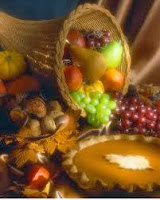Raising the Next Generation of Antique Collectors
The Holiday Season is the perfect time to engage your child in an exciting hobby. Hobbies offer learning experiences that are fun, encourages your child's creativity, promotes problem solving, and decision making skills.
Children are natural collectors.
A leisurely walk often results in a varied collection of weeds, pebbles, leaves, twigs, and bits of gum wrappers that sparkle in the sunlight, being gathered up. And what mother has not shrieked with delight when her child returns from a walk in the woods with a critter found wiggling from under a rock!
A family day at the beach can yield buckets of collectible delights. Seashells of varying shapes and colors, driftwood, and seaweed washed ashore, even the very sand of the beach if held tightly in tiny hands to show what treasures have been found. If you are really lucky you may find a message in a bottle tossed into the ocean years before by an unknown friend.
Childhood Collecting in the 1900s
In the 1900s boys frequently collected buttons, books, stamps, pictures, pens and pencils, stones, marbles, railroad timetables, bats and balls, neckties, scarf-pins, tickets, tops, rulers, and shoe-laces. Girls collected dolls, ribbons, shells and spoons handkerchiefs, cups and saucers, calling cards and lace and sewing thimbles.
Free Choice Generation of Collectors
In today's world boys can collect dolls and girls can collect trains. This free-choice collecting allows our children to experience a variety in collecting, handling, arranging and classifying their collected items. When engaging in their collections children are animating and empathizing in make-believe adventures that encourages creativity, logical thought, and developing social relationships with peers.
When purchasing gifts for your child this holiday season remember- you may be sparking an interest that leads to the start of a hobby for your child. We have all heard or read stories of famous personalities who relied professionally on their leisure collections for inspiration, knowledge, and skills. Here are just a few examples.
Physics Nobel Prize winner, David Lee, collected bugs, railway time tables, and meteorological charts
Encouraging Your Young Collector
Visit museums, art galleries, zoos, living history sites
Let your child accompany you on shopping trips, even better if they include antique shops
Read, watch, talk about books, videos, and movies you watch together as a family
Share your childhood experiences with collecting, better still if you have your collection to show your child
Start a collection with your child, it can be of action figures, books, cards, anything your child finds interesting and is age appropriate
Collections do not need to be large. There is a saying among antique dealers that
" if you have two of something you have the start of a collection"
Till next time, stay well, stay happy



 Here are my top 5 essential stocking stuffer picks for antique collectors.
Here are my top 5 essential stocking stuffer picks for antique collectors.

